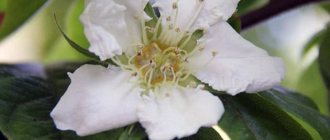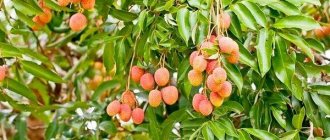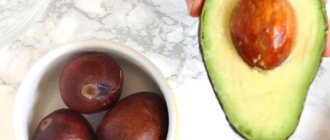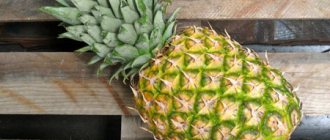Growing a mango from a seed is an interesting, painstaking job that requires patience. The result can be obtained by having knowledge about proper planting and caring for seedlings. Mango is a heat-loving tropical tree. It is most widespread in India, where it is the national plant. Widely cultivated in the countries of Southeast Asia and East Africa.
How to choose a mango for planting
Choose ripe, juicy fruit, which should be very fragrant and slightly soft. Don't go by color because different varieties vary significantly. It’s better to pay attention to the presence of dark spots - this is a sure sign that you need to take it!
Overripe mangoes are also suitable for planting, although you will not be able to eat the pulp. To the touch, such fruit is strongly pressed, it has an unpleasant smell and taste. If no ripe fruits are found in the vicinity, you can buy green ones and put them in paper to ripen for a couple of days in a dark place.
Photo: m.aksam.com.tr
Exotic on the windowsill - is it real?
Mango
Mango is an evergreen tree, its fruits are colored yellow, green, red or combinations thereof, the flesh is yellow or orange.
If you are going to grow a mango on your windowsill, immediately accept that the plant will only be decorative. For fruit to suddenly appear in your pot, a miracle must happen. Mango bears fruit only in open ground and in climatic conditions that do not require frost. Even a short cooling to + 5 C° leads to the death of flowers and fruits of the plant. A consistently hot climate with moderate humidity is a suitable environment for growing mangoes. Therefore, it grows generously in India, Malaysia, East Africa and Asia, the Philippines and California (USA). In Europe, the fruit is cultivated in the Canary Islands (Spain).
On your windowsill you will grow a perennial exotic plant with bright green oblong leaves. With proper care, you can wait until flowering. Mango flowers are arranged in the form of panicles, have a light yellow or pink tint and have a pleasant smell.
Mango in the photo
Mango fruit
Mango tree with fruits
Mango flowers
Mango at home
How to get a bone
The mango seed is securely hidden in the shell, which must first be cleared of pulp. Rinse it well under cool water and examine it for damage. If there is a crack on the shell, split it completely, and if not, carefully cut it with a knife.
Carefully remove the seed from the shell and place it in a solution of potassium permanganate for disinfection for 7-10 minutes. You can use ready-made store-bought fungicides, but follow the instructions on the package strictly. You need to plant the seed right away, otherwise it will dry out in a couple of days and will definitely not sprout.
Long-lived tree
The mango tree is a perennial plant of rare beauty. In nature, its height can be 30 meters, and its roots reach six meters. Large leaves are similar to palm trees, the branches are flexible and elastic. The tree can grow and produce crops for as long as 300 years.
Mango blooms in February-March. The aroma of its delicate yellowish flowers, forming large inflorescences, is reminiscent of the smell of lilies. The fruits are large and varied in shape. The peel of the fruit is quite dense. And under it is bright yellow juicy pulp, in which a flat bone is hidden.
How to sprout a mango seed
It happens that the mango seed has already begun to sprout right in the shell. Then you're in luck and won't have to germinate it separately. Otherwise, wrap it in damp gauze or cotton and lock it in a food container.
Move the container to a dark, warm place and check the humidity twice a day. Spray the package with water every day, but do not unwrap it. The seed will begin to germinate in 1-2 weeks, and after that it should be immediately transplanted into the ground.
Photo: cavk.ru
How to grow an avocado from a seed at home
Disease control and prevention
Mango, like other plants, is susceptible to various diseases that are typical for indoor plants. The general condition of the tree is negatively affected by cold, lack of moisture and heat, as well as strong temperature changes. All this significantly weakens the plant. The most common types of diseases can be identified:
Shield . This disease occurs due to lack of ventilation, as well as irregular inspection of yellow leaves. You need to fight scale insects with the help of special solutions: “Phosbecid”, “Aktara”. A soap solution is also an effective remedy; you can easily prepare it yourself. The recipe for such a solution is simple: dilute a spoonful of liquid soap and medical alcohol into 1 liter of water.
Aphid . This is a very tenacious pest, and it is not so easy to overcome. For complete destruction, it is better to use several products at once: “Akarin”, “Fitoverm” or “Aktara”. They should be used alternately.
Whitefly . Warm and humid growing conditions are ideal not only for the plant, but also for the whitefly. To protect mangoes from the appearance of this pest, it is important to provide regular ventilation in the summer, and also not to overdo it with air humidification. In order to completely get rid of pests, you can use fumigators, soap solution, as well as special glue baits. All these means together are very effective.
Powdery mildew . This is a common disease caused by excess moisture. It is necessary to replace the top layer of soil, and also stop using the spray bottle for a while. Powdery mildew will quickly be destroyed by special preparations: “Fundazol” and “Vitaros”. These essences need to be applied liberally to the entire tree.
Anthracnose . Another disease caused by high humidity, as well as a deficiency of microelements such as potassium and phosphorus. This is a dangerous disease and if the plant is completely damaged, it is quite difficult to save. If there are other plants in the house, it is best to isolate the mango. If the plant is not entirely affected, then it must be treated with a solution of copper sulfate.
But you shouldn’t be afraid of all these diseases, because if you grow mangoes from seed properly, they simply won’t arise.
Choosing a flowerpot and soil
You need a medium pot with a diameter of about 10 cm, but always deep. Mango roots grow very deep, so they need space. Do not take the pot “to grow”, otherwise the water will stagnate and the roots will begin to rot.
Make drainage holes in the flowerpot and fill it a quarter of the volume with floral expanded clay, gravel or even foam chips. For mangoes, the most common universal soil of neutral acidity is suitable. You can mix peat with coarse sand in a ratio of 2 to 1.
Mango tree - home decoration
Is it possible to grow a mango tree from a seed at home? Of course, if you have time and patience.
The efforts spent will pay off handsomely: a luxurious tree will not only decorate the house, but also improve the atmosphere and have a beneficial effect on the health and mood of all family members.
How to plant mango
Simply stick the mango seed and root three-quarters vertically into the ground. If there is a sprout, lay it horizontally, sprinkle it with a little soil and water it well. For the first time, cover the seedling with glass, film or a transparent plastic bottle.
Place the flowerpot on a southern windowsill; the more natural light, the better. Briefly ventilate the seedling every 2-3 days so that it does not start to rot. The shelter can be removed after 2-3 weeks, when the mango has more or less taken root and begins to sprout little by little.
Do not remove the improvised greenhouse abruptly, because the mango needs acclimatization. First, make small holes in it or leave gaps. Daily increase the size of these gaps and the duration of ventilation, and after 3-4 days remove the protection completely.
Photo: fb.ru
Geranium: home care, propagation and transplantation
Material preparation and planting
The pit is cleaned very carefully so that the remaining pulp does not cause it to rot. In overripe fruits it may crack. In this case, you need to be especially careful so that the sprout that has already appeared is not damaged. The best time to plant mangoes by any method is early summer. Methods:
- Take a whole seed and bury it with the pointed end down, approximately ¾, into the soil (for flowering indoor plants or for succulents, mixed with small fractions of stones, expanded clay). Create a kind of mini-greenhouse over it, for example, with a cut plastic bottle. Place the container in a room with high humidity. Water regularly with water at room temperature. This method has a drawback: due to the hard shell, the sprout may hatch only after a month or more.
- You can speed up the process by slightly opening the bone from the sharp end with a knife and soaking it in warm water for 24 hours. Then you need to seal it tightly in a plastic bag, pouring a little water into it. Place on a plate (or any flat surface) that will provide access to heat but prevent burns, and place on the radiator. When the kernel opens completely, exposing the germ of the sprout with a root, open the bag and constantly add water, maintaining moisture. Do not overwater, otherwise the sprout will rot. When greenery appears, transplant into the ground.
- If the shell is too hard and opening the seed can damage the sprout, place it in slightly warm water and then place it in a sunny window. Afterwards change the water every two days. And when the bone softens, try to open it.
- When slightly opened, you can carefully remove the kernel, wrap it in a napkin moistened with warm water and, in this form, deepen it into the soil. Just like when planting a regular seed, leaving the blunt end at the top.
- You can remove the kernel and, wrap it in a damp cloth, place it in a warm place on a saucer of water, constantly monitoring its level. After the sprout appears, plant it in light soil to a depth of 2-3 centimeters. Maintain soil moisture by regularly watering the planted sprout.
Mango care at home
Mangoes need to be watered often, but not too intensely, so that the ground does not turn into a swamp. The interval between watering is approximately 2-3 days, but in the summer it will have to be reduced. Monitor the condition of the soil: it is important that the earthen ball does not dry out completely.
There is no need to bathe your mango, but wipe the leaves with a clean, damp cloth every week. This way you will be able to monitor the appearance of diseases or pests so that you can quickly take action. Spray the tree twice a week or place a humidifier nearby.
In summer, strengthened mangoes can be taken outside, but only when the threat of frost has definitely passed. A year later, with the onset of summer, slowly fertilize it every 2-3 weeks with complex mixtures.
Photo: diz-cafe.com
Features of care
If you planted the mango in a not very large pot, then you should not rush to replant it. This procedure is recommended to be carried out only after the plant has become stronger and has grown a little. Transplantation into a permanent pot should be done for a plant that has reached one year of age. There is no need to replant the plant very often, since the mango reacts extremely negatively to this procedure, and as a result it can shed all its leaves or even die.
In order for a plant to grow and develop normally, it needs conditions as close to natural as possible. It reacts negatively to dry soil, as well as low air humidity. In this regard, it needs to be provided with systematic watering, and it is also necessary that the air humidity in the room is constantly high (about 70–80 percent). You should not moisten the foliage with a sprayer too often, as this can provoke the appearance of mold and fungi. And they, developing rapidly, can even destroy mangoes.
Fertilizer for mangoes that were grown from a seedling or from a seed in room conditions can be vermicompost and mixtures containing nitrogen, which are used in growing citrus fruits and persimmons. If your mango grows in open ground, organic fertilizers should be applied to its tree trunk a couple of times a year as top dressing. So, 4 or 5 liters of water can be infused with rotted leaves or manure.
The plant needs good sunlight. In this regard, the lightest window sill is chosen for its placement. In winter, additional lighting is recommended, which can be done with fluorescent lamps.
This tree tolerates pruning quite well, so you can shape the crown the way you want. If the mango grows constantly in the room and you are not going to plant it in open ground, it will definitely need systematic pruning. When it grows to a meter in height, you need to start pinching the upper pairs of leaves, and they should be removed along with the buds.
How to replant and shape a mango
The six-month-old mango has already grown and grown enough to be transplanted into a larger pot. You still need good drainage and the same universal soil. Carefully remove the root system with a lump of earth, place it in a new pot and add fresh soil to the sides.
In the future, the mango does not require replanting on a schedule, but make sure that the roots fit in the pot. If they begin to peek through the drainage holes or the tree’s growth suddenly slows down, it’s time to change the flowerpot.
Mango grows quickly and stretches upward, so it definitely needs formative pruning. To make mango branch and grow side branches, pinch the tops of young shoots. If it has already grown more than a meter, do seasonal decorative pruning to keep the crown beautiful and tidy.
Photo: build-together.ru
How to care for an orchid at home
Requirements for containers and soil
When choosing a planting container, you need to take into account the following features: the plant has a taproot, rather long, root system, so you need to immediately prepare a tall, spacious pot, especially since the young seedling should not be replanted often. Too large will also not work - the roots in it can rot due to insufficient aeration through the thickness of the earth. The pot must be equipped with drainage holes (plastic ones usually have holes marked that need to be pierced with a hot knife or nail) and a tray.
Mango loves loose, fertile soil
For planting, you can purchase ready-made soil with a neutral alkaline reaction, or you can independently mix garden soil with peat, sand and vermiculite (perlite) to increase looseness, water and air permeability.
Before filling the pot with earthen mixture, do not forget about the obligatory drainage layer, which is made 5 cm high using expanded clay, small pebbles, and broken bricks.
Will mango bear fruit?
The mango will not bloom for the first time - in 6-10 years. It is very difficult to get fruit from it, and for this it must be grafted. This is another advantage of buying a sprout at a nursery - all the procedures have already been carried out there.
To graft a mango, you need a bud from another tree that is already bearing fruit. Carefully cut it with a piece of wood with a sharp, sterile knife so as not to damage it. Make a small T-shaped cut on your mango and peel the bark to the side.
Insert the cut bud there and secure it with soft adhesive tape. You will remove it later, when the kidney has definitely grown in. A couple of years after grafting, you will be able to admire the first flowering. At this time, feed the mango more often with nitrogen mixtures. And in another three months you will see the first harvest!
Photo: sazhaemvsadu.ru
Application
Animals should not be fed mango leaves due to their high content of essential oils. Burning mango leaves releases toxic gases that can cause eye and lung irritation. Mangoes are eaten at any stage of ripeness. In the East, unripe mangoes are pickled in oil with salt and spices. Unripe fruits are used to prepare side dishes for meat and fish dishes.
The substances contained in the ripe fruit strengthen the heart, improve brain function, and are good for vision, pancreas, kidneys, and digestive tract. One mango contains almost half of the daily fiber requirement. Mangoes are eaten fresh and canned. In Indian medicine, practically all parts of the mango tree are used - fruits, seeds, flowers, bark.
Currently reading:
- How to grow Chinese cabbage in open ground
- Using hydrogel in open ground for plants
- Increased potato yield using Dutch technology
- Timely application of dolomite flour for the harvest
Share the news on social networks
About the author: Lyudmila Vasilievna Nosikova
Agronomist of the state agricultural enterprise "Garovskoe" of the Khabarovsk region of the Khabarovsk Territory.
Methods for growing mangoes at home
Not any varieties are suitable for home use, but only dwarf ones, and the plant itself must be grafted. There are different ways to grow mangoes at home. The easiest way is to purchase seedlings from a nursery, place them in specially prepared soil and provide proper care.
But the second method is somewhat more complicated - to germinate the seed itself. You will have to look for the “right” fruit in the store.
Opening the bone. Seed extraction.
Remove the fresh seed from the ripe fruit. For this purpose, the fruit is cut, the kernel is cleaned and washed well. Next, you can try to remove the seed. We do this with a knife very carefully. The seed resembles a large bean. There may be several embryos. We choose the smoothest, greenest one. It will germinate for sure.
It is better not to break the hard shell, otherwise the sprouts may be damaged. Place a bone that is too hard in a jar of water and place the container in a warm place. We change the water periodically.
This method is also suitable: place the seed in a slightly moistened towel, and then again in the heat. When the embryo germinates, it can be planted in a pot.











